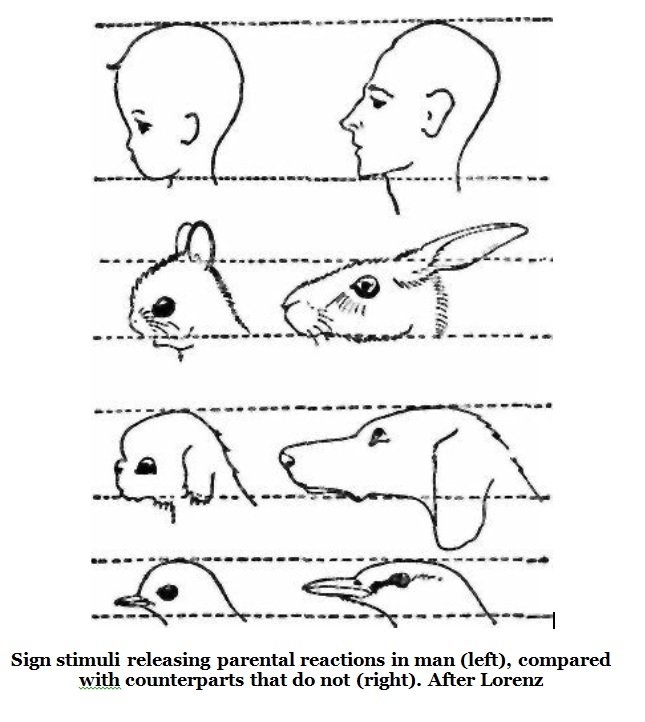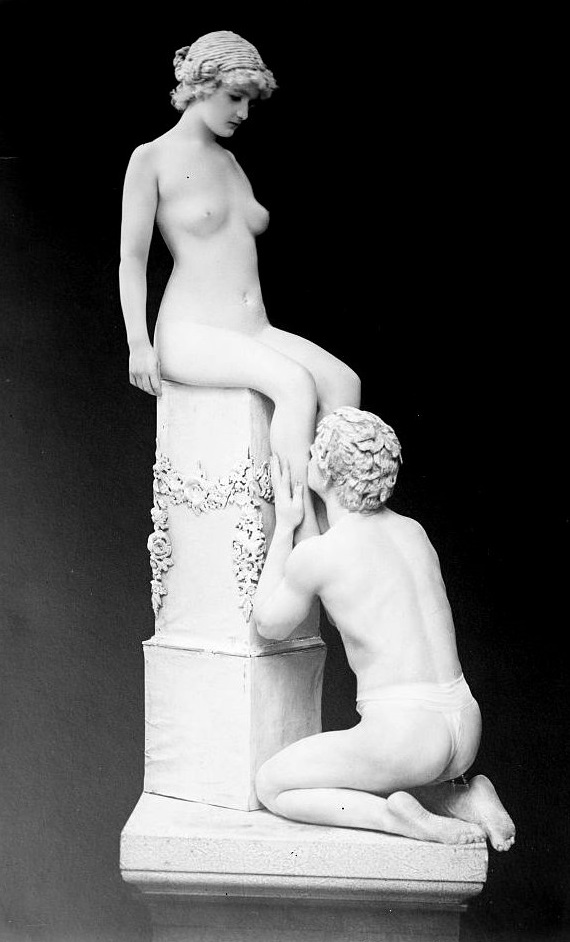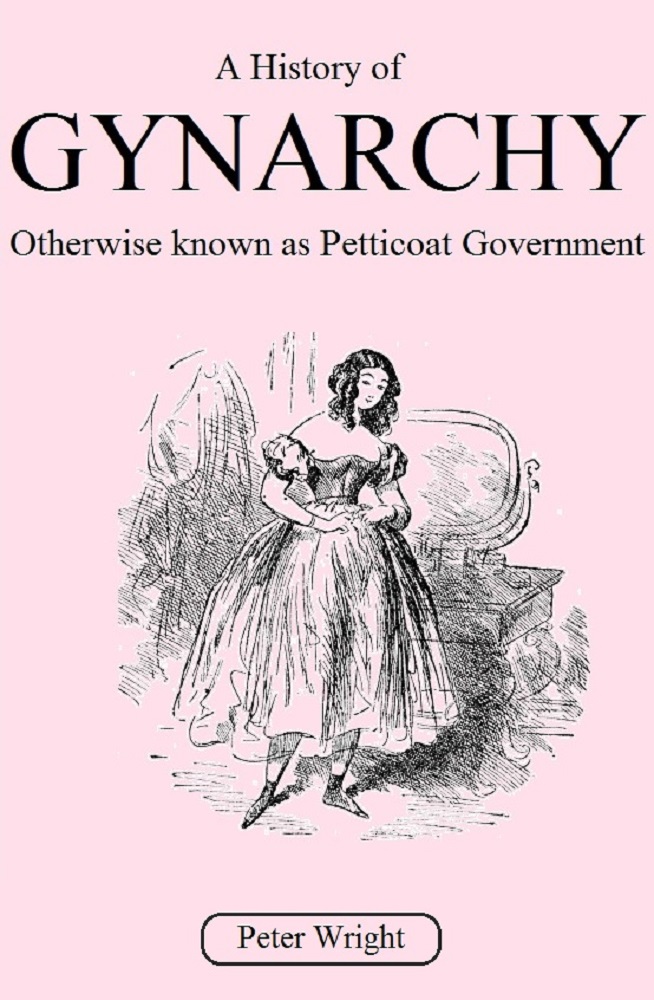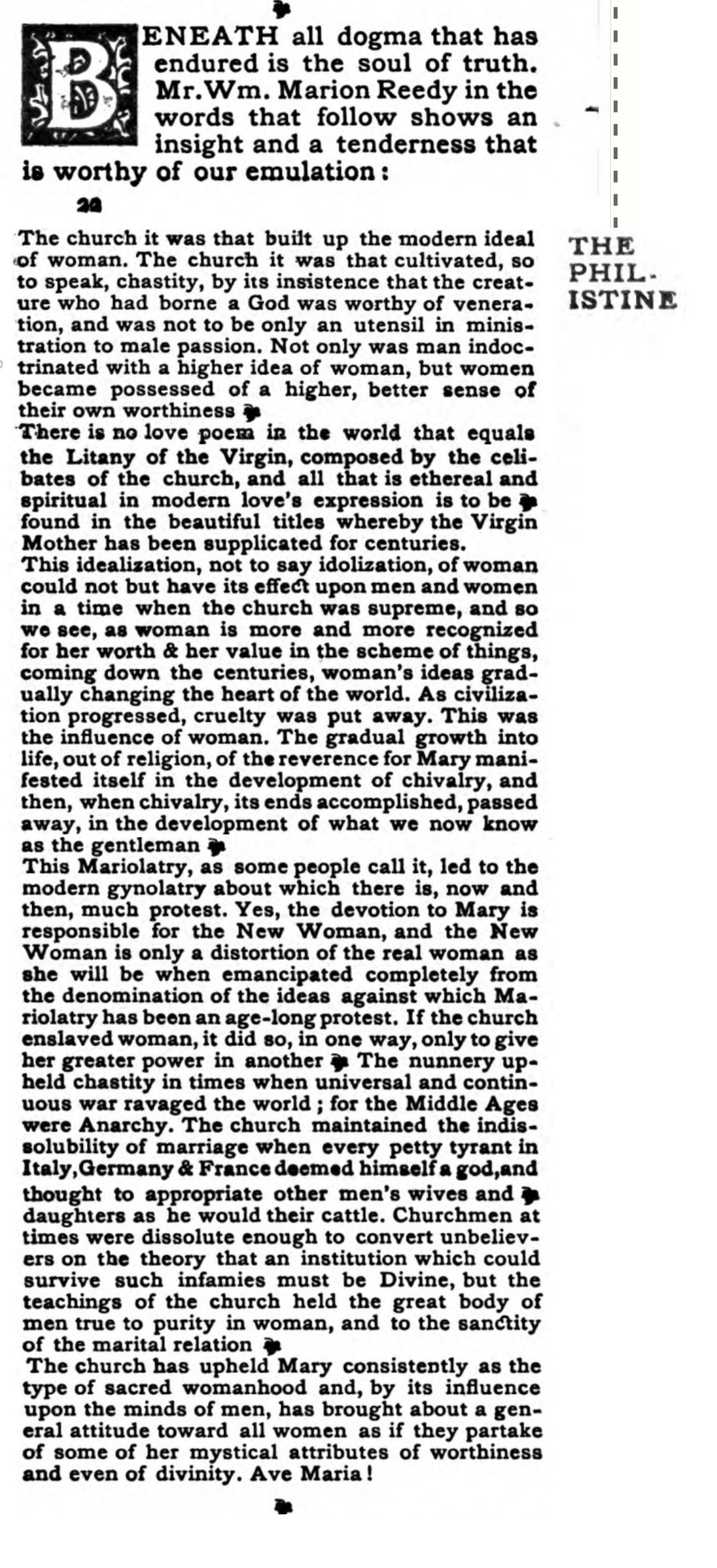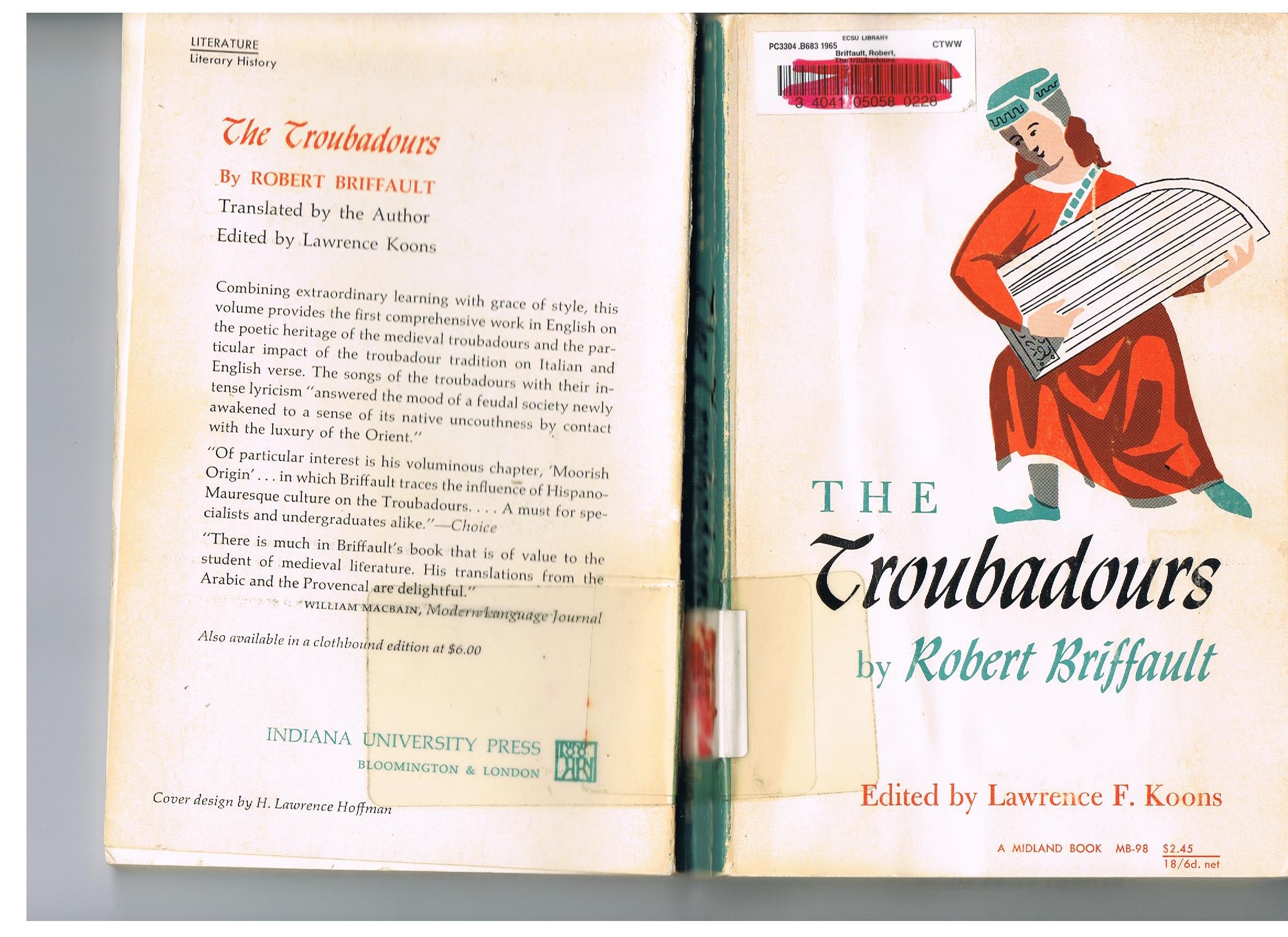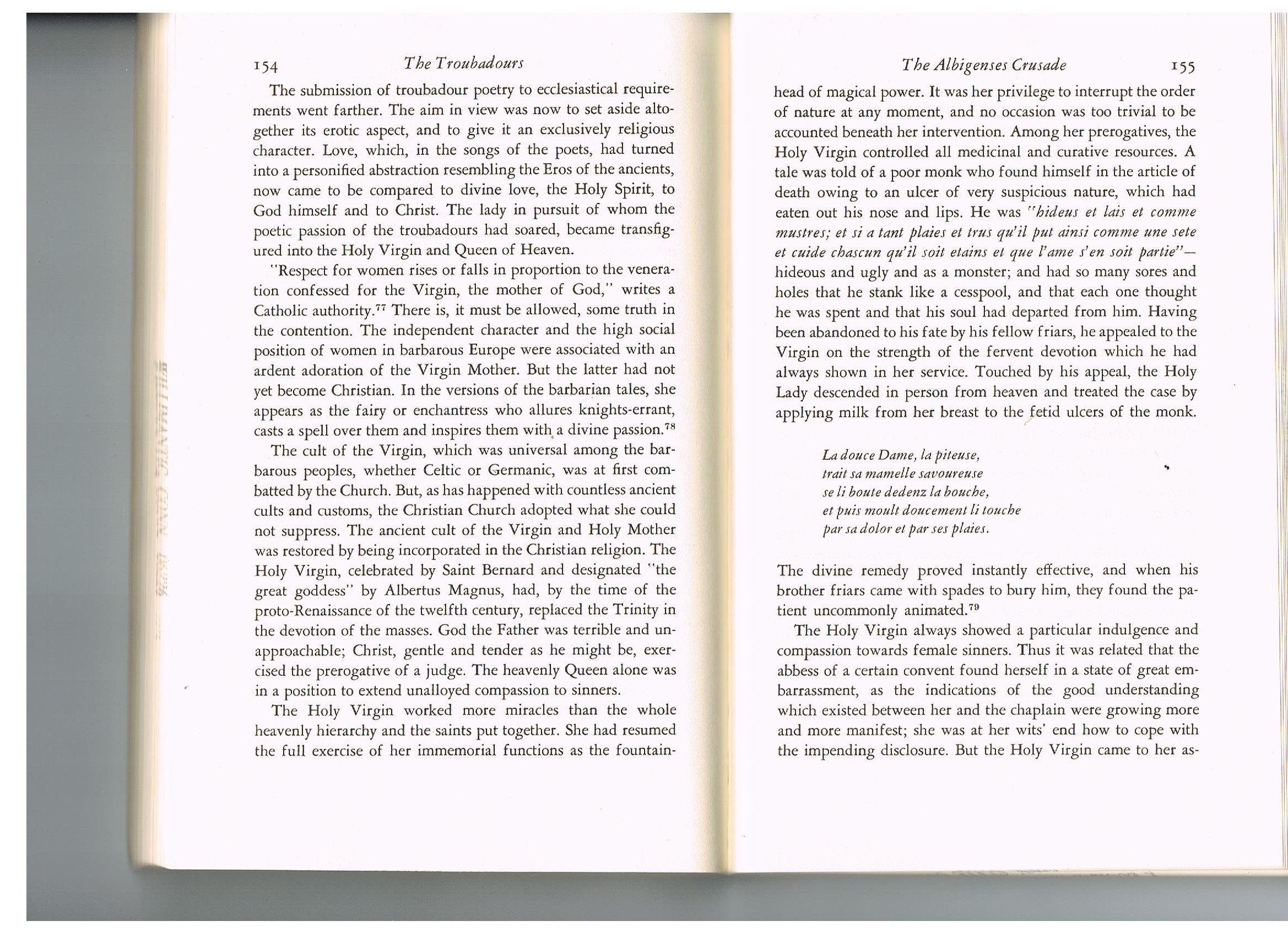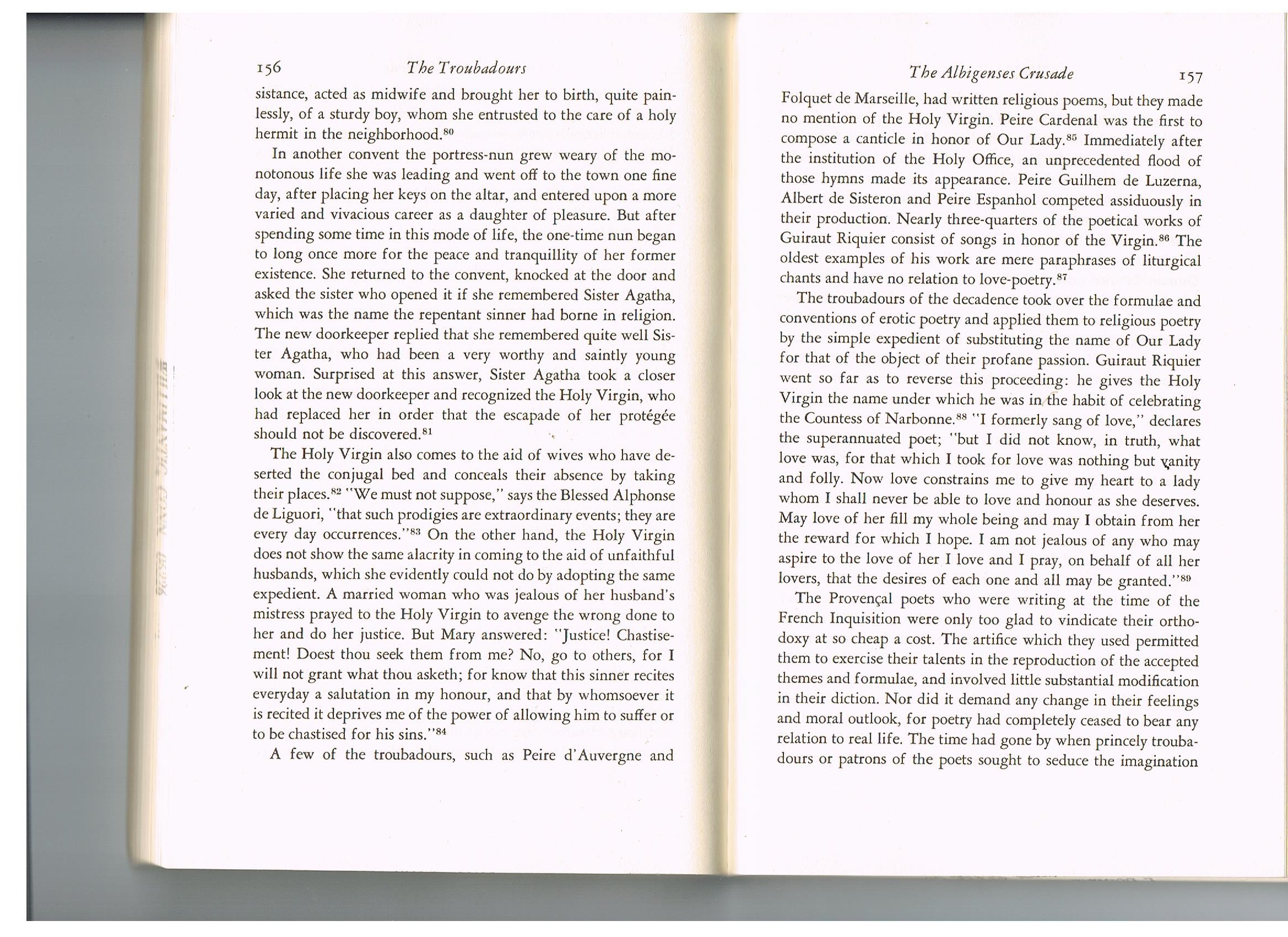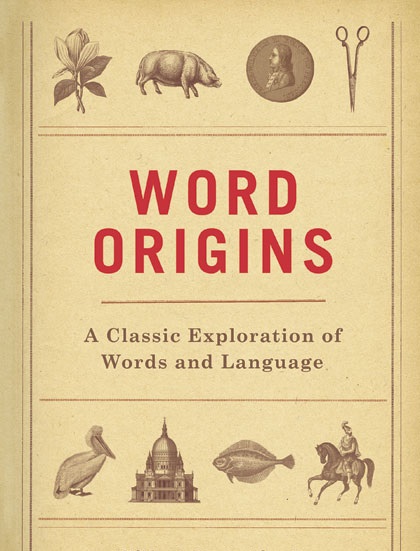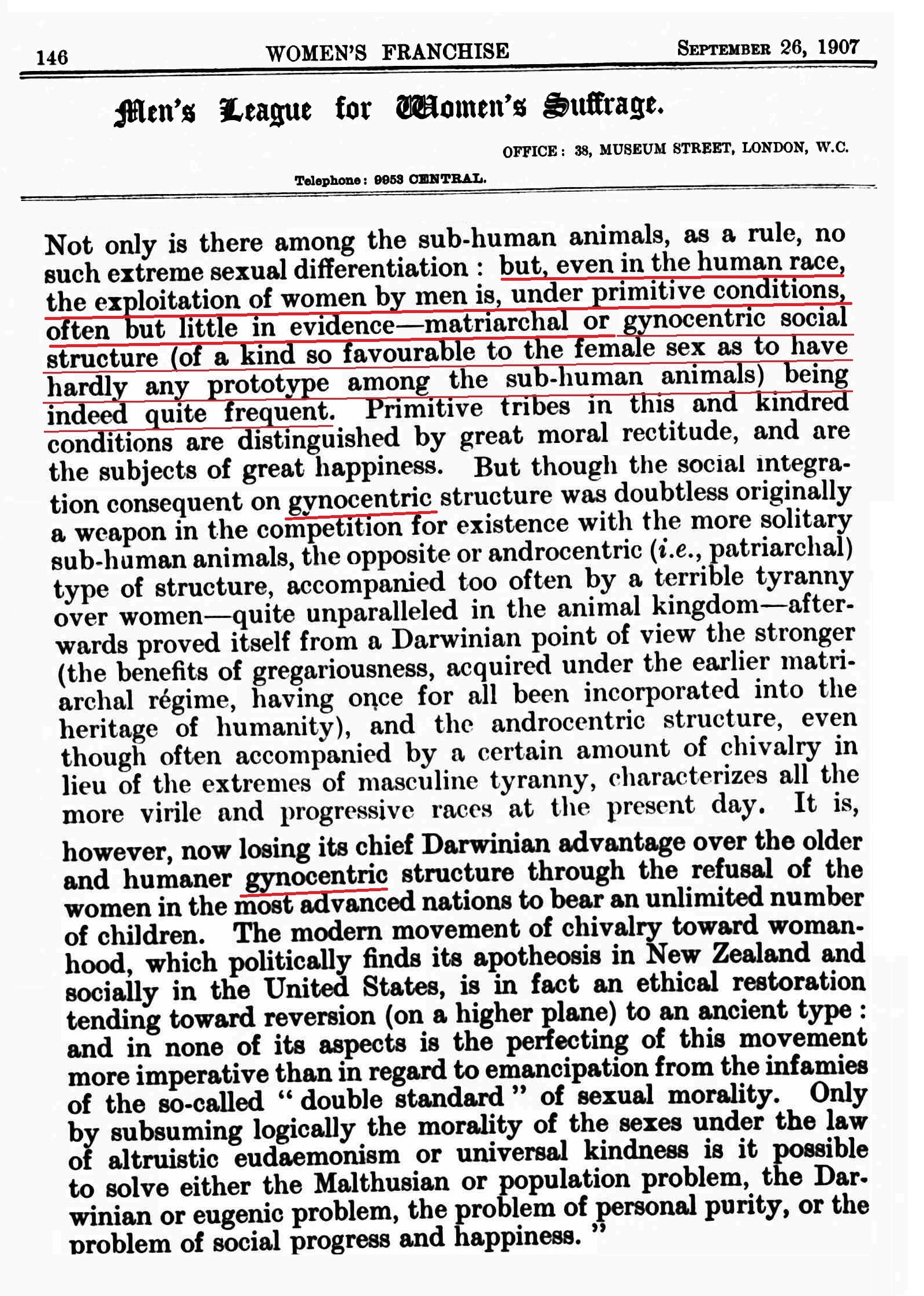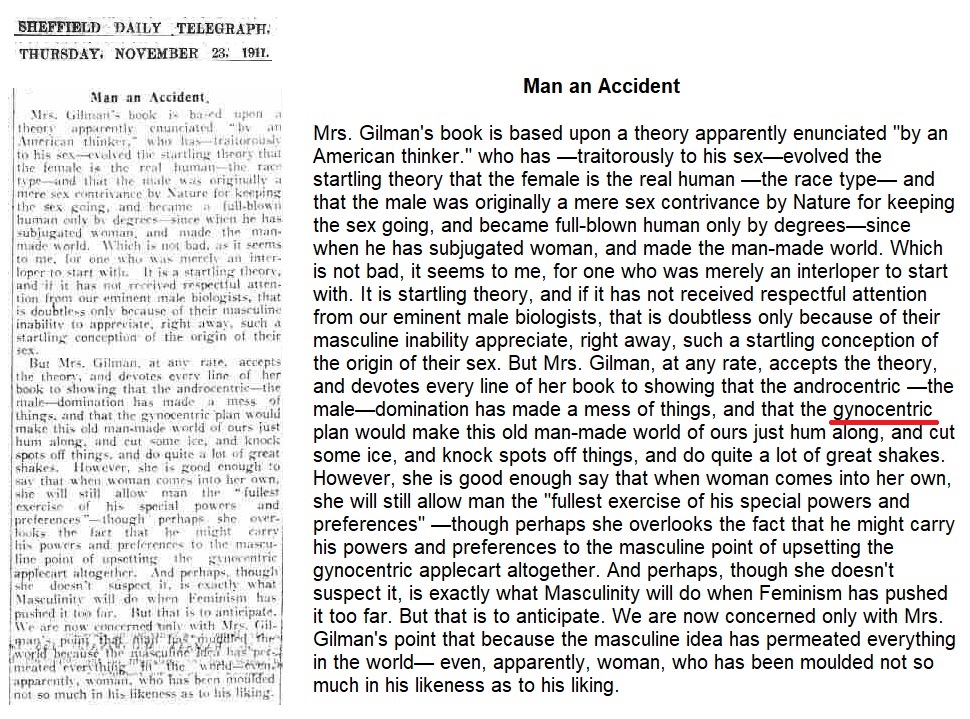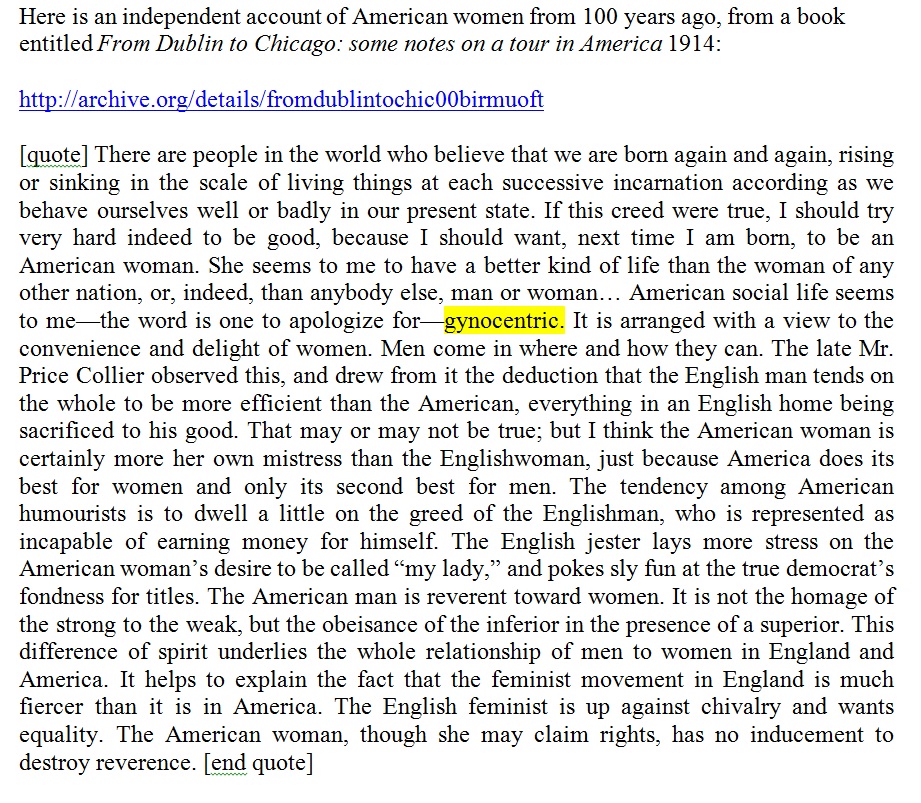By Roger Boas

There is still a reluctance on the part of many medievalists to recognise that Arab culture had an impact on medieval Europe which went far beyond the acquisition of certain luxury goods. Of course Europe’s indebtedness to the Arabs as mediators in the transmission of Greek philosophy, medicine and mathematics is readily admitted, because such an admission does not undermine the conventional myth of European cultural identity, Graeco-Roman in its intellectual and artistic origins and imbued with Christian ethics. The transmission is presented as if it were a “a transaction similar to the purchase of some object in a store”. 1
It is thus assumed that Arabs played a purely passive role in this process. The courtly love tradition would seem to be something quintessentially European because it is associated with the rules of polite society and Christian chivalric ideals—and is at the very root of the modern concept of romantic love. For this reason many people would consider it preposterous to claim that it might have developed as a result of cultural links with the Arab world.
A hundred years ago no scholar would have dared to make such a claim. In fact, after the colonial era, which from the Arab point of view can be dated from Napoleon’s Egyptian campaign (1798-1801), discussion of Europe’s cultural debt to the Arabs became virtually taboo until the 1930s, when, outside Spain, research was done by Lawrence Ecker, Henri Peres, Emile Dermenghem, Evariste Levi-Provengal and A. R. Nykl. Even in Spain, where pioneering work was done by Julian Ribera y Tarrago, Miguel Asm Palacios, Emilio Garcia Gomez, Ramon Menendez Pidal, Americo Castro and others, there were those, like Claudio Sanchez-Albornoz and Marcelino Menendez y Pelayo, who attributed most of Spain’s defects, in particular her “cultural belatedness”,2 to the baneful de-Europeanising influence of Islam.
Denis de Rougemont, who is more famous for his rather eccentric theory that Courtly Love was the product of a heretical Cathar environment, declared in 1956, in the revised edition of Passion and Society, that it was no longer necessary to establish “Andalusian influence” on the troubadours, because to him it was self-evident:
And I could fill pages with passages from Arabs and Provengals about which our great specialists of “the abyss which separates” would possibly fail to guess whether they were penned north or south of the Pyrenees. The matter is settled .3
But, unfortunately, the matter is far from settled, and the relationship between Arabic and Provengal poetry is more complicated than de Rougemont would have us believe. The two specialists of the abyss whom he had in mind (and whom he mentions in the same paragraph) were the 19th-century scholars Ernest Renan and Reinhardt Dozy. Modern scholars, it would seem, still find it difficult to shrug off the negative judgements pronounced by these two orientalists.
After conceding that Castilian and Portuguese are not the only Romance languages which contain many Arabic loan words, Renan writes:
With regard to literary and moral influences, these have been greatly exaggerated; neither Provencal poetry, nor chivalry, owe anything to the Muslims. An abyss separates the form and the spirit of Romance poetry from the form and the spirit of Arabic poetry; there is no evidence that Christian poets knew of the existence of Arabic poetry, and one may assert that, even had they known about it, they would not have been able to understand its language and its spirit.4
Dozy’s view on this matter was even more uncompromising:
As regards the possibility of a direct influence of Arabic poetry on Provencal poetry, or on Romance poetry in general, it has not been established and it will not be established. We consider this question to be an entirely idle one; we would like never to see it discussed again, although we are convinced that it will be for a long time yet. Every man has his own hobby horse! 5
Dozy’s telling words “on ne l’a prouvee et on ne la prouvera pas” clearly betray his lack of critical impartiality. One would not expect such bias from one of the leading historians of Muslim Spain. The tone of these words reminds me of Alfred Jeanroy’s reaction to Julian Ribera’s proposal (made in 1928) that the word trobar might derive from the Arabic verb taraba, “to sing, to play music; to be moved by joy or grief; to fill with delight”: “The Arabic etymologies ascribed by Ribera to the words troubadour … will certainly convince nobody”.6
Samuel Stern quoted with approval the lines by Dozy which I have just cited, in a paper delivered in Spoleto in 1964. His own conclusion was very similar:
That the troubadours could not have been in direct contact with Arabic poetry is a direct consequence of the indisputable fact that they did not know, and could not have known, enough to understand it… To my way of thinking, and the opinion is worth no more than that of anyone else, there is reason to doubt whether even a single element of the poetry of the troubadours is due to the influence of Arabic poetry .7
How can we be so sure that the troubadours had no knowledge of Arabic? And how can we be so sure that they could not have obtained a rough translation of the words of a song if they found the music and the rhythm and the rhymes pleasing to the ear? Although Stem does not deny that there are “similarities between the troubadour concept of love and certain ideas expressed in Arabic literature”, he suggests that “these similarities will have to be explained as parallel developments not linked to any genetic relationship”.8
When, in 1976, I confided to an American academic whom I met at a conference that I was doing some research on what scholars had said about amour courtois and that I was inclined to favour the Arab theory of origins, he was very dismissive: “I thought that theory had been finally disproved by Samuel Stern.”
Fortunately, I was not deterred: having completed a chronological survey of what I called Courtly Love scholarship, I had learnt that in literary and cultural history there are no fixed absolutes; theories change with the mood of the times and the scholar who makes the greatest claims to impartiality is often the most prejudiced. Incidentally, this does not mean that I consider the whole enterprise to be doomed from the start. Maria Rosa Menocal is surely being excessively modest when she implies that her alternative vision of the mixed ancestry of European culture is merely a myth with which to modify prevailing myths.9
On the basis of my own findings and my assessment of the evidence, I still believe that Courtly Love may be defined as “a comprehensive cultural phenomenon … which arose in an aristocratic Christian environment exposed to Hispano-Arabic influences”.10
Although the troubadours themselves used other expressions such as fin amors, bon amors and verai’ amors (and similar terms are found in other Romance languages), Courtly Love is a convenient description of a conception of love which informed a tradition of European literature from the 12th century until the Renaissance, so that, by extension, the term is applicable to this literature.12
Whether it is treated seriously or satirically, this literary or poetic convention, which was propagated in Europe by the Provencal troubadours, is evident in the works of most of the major medieval poets and writers of fiction, including Bernart de Ventadom, Guillaume de Lorris, Chretien de Troyes, Heinrich von Morungen, Wolfram von Eschenbach, Gottfried von Strassburg, Cavalcanti, Dante, Petrarch, Ausias March, Chaucer, John Gower, Malory, Marie de France, Charles d’Orleans, Santillana, Diego de San Pedro and Fernando de Rojas. It is also of central importance in some Renaissance writers, such as Gil Vicente and Garcilaso.
The essential features of this conception of love are the beloved’s sovereignty, the lover’s fidelity and submission, secrecy, the interdependence of love and poetry, and the ennobling, yet potentially destructive power of love. The beloved was invested with the sovereignty of a feudal overlord or the perfection of a goddess. The lover humbly pledged to serve her, as if he were a vassal or a slave, demanding no more than a sign of recognition for deeds performed on her behalf. Since a public display of emotion might jeopardise the lady’s honour, particularly if she were married, discretion was a fundamental precept and a condition of any sexual favour which she might confer.
This explains why it was customary for the poet to conceal his beloved’s identity by giving her a fictitious name or senhal. By endeavouring to make himself worthy of his beloved, the lover acquired a number of moral, courtly and chivalrous qualities. If she were too easily accessible, love would cease to be arduous and ennobling; yet if, on the other hand, she epitomised the archetypal belle dame sans mercy, the traditional symptoms of love—insomnia, emaciation, trembling, fainting and pallor—could deteriorate into a species of melancholia, leading ultimately to death. Founded, as it was, on the precarious coexistence of erotic desire and spiritual aspiration, this conception of love was inherently paradoxical. It was, to quote F. X. Newman, “a love at once illicit and morally elevating, passionate and self-disciplined, humiliating and exalting, human and transcendent”.12
With the exception of the analogy of feudalism, all the main features which I have just mentioned are founded in the Arab poetic tradition of chaste love, al-hubb al-‘udhri, which can be traced back to the lst/7th century poetry of the Banu ‘Udhra (“the Sons of Chastity”), a tribe renowned as martyrs of unrequited love, and to Jamil b. Ma’mar al- c Udhri (d. 82/701)—a poet better known as Jamil Buthayna on account of his love for Buthayna—in particular. This tradition was discussed and more clearly formulated in many treatises, the most famous being Kitab al-zahra (“The Book of the Flower”)13 by
Muhammad b. Dawud al-Isfahani (255/868-297/910), composed in Baghdad in the late 2nd/9th century, and Tawq al-hamama (“The Dove’s Neck- Ring”)14 by Ahmad b. Sa‘Id b. Hazm (Ibn Hazm) (383/993-456/1064), composed in Cordoba ca. 412/1022.
From Muslim Spain we may infer that this paradoxical tradition of profane spiritualised love was imported into southern France by musicians, singing-girls, captives and slaves. Another channel of communication between east and west was, of course, the Norman Kingdom of Sicily. But it not only needs to be demonstrated that Arabic poetry and/or
treatises on love were accessible to the Provencal troubadours; it is also necessary to prove that the undoubted parallels which exist between these two conceptions of love cannot be explained by coincidence or polygenesis, and to do this one should be able to produce literary evidence of a cultural exchange or transmission. The serious objections which have been raised have never been countered in a systematic way.
Peter Dronke, one of the participants in the discussion following Stern’s paper at Spoleto, believes that the parallels between Provencal and Arabic love-poetry are coincidental. This is the assumption underlying his Medieval Latin and the Rise of European Love-Lyric.15 In this impressive work, which begins with the oldest of all collections of love-songs, composed in Egypt in the second millennium B.C., and includes examples of Icelandic, Byzantine, Georgian, Arabic and Mozarabic poetry, it is proposed that amour courtois, here apparently used as a synonym for the experience or sensibility which gave rise to the European love-lyric, is universally possible and might occur “at any time or place” (p. ix).
There are three fundamental objections to this approach: first of all, it belittles the novelty of the poetry of the Provencal troubadours, both in style and content, and the extraordinary impact which this poetry had on European literature and social mores; secondly, it leaves the main literary tradition of the Middle Ages without a name: amour courtois is, after all, a critical concept, defining not simply an individual experience, but the content of a literary genre and a general cultural phenomenon; thirdly, before the 12th century, only Arabic poetry, or poetry influenced by the Arabic lyrical tradition, contains all of the essential features of Courtly Love which I listed earlier.
Of course it is an exaggeration to claim, as Curtius did, that “the passion and the sorrow of love were an emotional discovery of the French troubadours and their successors”, 16 or that, by comparison with this revolution, the Renaissance was, in the words of C. S. Lewis, “a mere ripple on the surface of literature”.17 However the manner in which the troubadours wrote about love, as well as their decision to do so in the vernacular, was revolutionary. As Mario Equicola wrote in the late 15th century, “the way in which they described their love was new, quite different from that of the ancient Latin authors; these wrote openly, without respect, without reverence, without fear of dishonouring their ladies”.18 Alan M. Boase made this point very well in the preface to the first volume of his anthology of French poetry:
In general, the Greeks and Romans, not unlike the Chinese, regarded love as a sickness, as soon as it overstepped the bounds of that sensual pleasure which was regarded as its natural expression. This attitude is still more inimical to passion than the almost pathological reprobation of sex which was that of patristic Christianity .19
He also wrote:
It is hardly in doubt… that the Arab forerunners of these poets [i.e., the troubadours] are to be found in ninth-century Andalusia and in the great Ibn Hazm of The Dove’s Necklace —who incidentally knew his Plato at a time when the philosopher was a mere name to the Christian West.20
Whilst I would agree with Dronke that the European love-lyric is a garden in which the roots can seldom be disentangled and that “it is far more important to watch the growth of the flowers”,21 we cannot fully appreciate the flowers unless we make comparisons, and, to my knowledge, no scholar has hitherto made a satisfactory comparative study of European and Arabic love-poetry. I have already alluded to some of the reasons why such a study has not been undertaken. The first priority is to develop a suitable methodological framework, bearing in mind the theoretical work which has been done on cultural transmission, in particular by Norman Daniel.22
In a study of this kind there could be five sections: the first dealing with the evidence of cultural links between Christian Europe and Arab-Islamic civilisation and possible avenues of transmission (i. e. Muslim Spain and Sicily); the second on musical theory and practice; the third on the question of formal and stylistic elements; the fourth on general themes and specific motifs; the fifth on the influence of philosophical ideas or theories, such as Platonism, Sufism or the medical description of love-melancholy. I am convinced that if this research were done properly, it would no longer be possible for a scholar like L. T. Topsfield to write a book entitled Troubadours and Love containing only one brief reference to Ibn Hazm and four cautious one-line references to hypothetical unnamed Hispano-Arabic sources.23
In the space of this paper I can do no more than offer some material for sections one and four: I shall mention a few facts about potential avenues of transmission and illustrate, by means of quotations, certain parallel themes in Arabic and European love-poetry. Some of these parallels are of a general nature; others are very specific and seem to demonstrate that certain passages of Ibn Hazm’s Tawq al-hamama were familiar to poets in France and Spain. First, I shall speak about the changing balance of power at the end of the 11th century; secondly, I shall discuss diplomatic and marital links between Navarre and the Caliphate of Cordoba; thirdly, I shall emphasise the role played by Arab ambassador-poets; fourthly, I shall mention relations between Castile and the Kingdom of Seville; and finally I shall consider the significance of the capture of the Aragonese stronghold of Barbastro and the influence of Arab singing-girls on the courts of southern France.
In the Iberian Peninsula, from at least the 10th century onwards, there had been many points of contact between Arabs and Christians: war, trade, diplomacy, intermarriage and migration. However, as a result of important political and economic changes, new channels of communication between Christian Europe and the dar al-lslam opened up in the late 11th and early 12th centuries. Here are some of the key dates: 457/1064, the sack of Barbastro by French knights; 478/1085, the capture of Toledo by Alfonso VI; 484/1091, the defeat of the poet-king al-Mu’tamid of Seville by the pious Berber Yusuf b. Tashfin, marking the end of the period of the muluk al-tawa’if, or Party Kings, and the beginning of the Almoravid era; 484/1091, the completion of the Norman conquest of Sicily; 1096-99, the First Crusade; 1112, the unification of Provence and Catalonia under Ramon Berenguer IV; 512/1118, the conquest of Saragossa by Alfonso I of Aragon.
From one end of the Mediterranean to the other Christendom was expanding: in Palestine, Syria, Sicily and Spain. The independent petty kingdoms of al-Andalus were so weakened by internal conflicts that, in desperation, they appealed to the Berber Almoravids of Morocco to intervene; then, realising too late that Ibn Tashfin had other ambitions, they turned in vain to the Christians for assistance. Whereas in the 4th/10th century the Christian kingdoms of northern Spain had lived in the shadow of the Caliphate of Cordoba, now the situation was reversed: the Muslim states sought to secure their survival by offering tribute to the Christian kings. With this shift in the balance of power, there was more willingness (as well as more opportunity) to imitate aspects of Arab culture which previously were perceived as debilitating and effeminate.
It is understandable that southern France should have been more receptive to the refinements of Arab culture than Castile, which had to remain in a constant state of military alert.24 The European sense of cultural inferiority, especially with regard to matters of love and marriage, is evident in Juan Manuel’s story about Saladin’s advice to the Count of Provence in El Conde Lucanor.25
It is surprising to find that, from the end of the 3rd/9th century, a special relationship was formed between the Kingdom of Navarre and the Caliphate of Cordoba. The amir ‘Abd al-Rahman II (r. 206/822-238/852), who defeated King Enneco and his Banu QasI allies in 228/843, owned a Navarrese singing-girl named Qalam; she had been trained in Medina to sing, to dance and to memorise verses and was skilled in the art of calligraphy.26 This caliph, who sought to make his court the rival of Baghdad under Harun al-Rashid and al-Ma’mun, was so infatuated by his love for Tarub, mother of his son ‘Abd Allah, that he was ready to submit to all her caprices, even though she once tried to poison him.27 His father al-Hakam I, who was a better poet, wrote several poems in which he describes himself as a slave or prisoner of love. “Submission,” he wrote, “is beautiful in a freeborn man Qiurr) when he is a slave ( mamluk ) of love”.28 The cruel ‘Abd Allah (r. 275/888-300/912), also a poet, married Onneca or Iniga, a Navarrese princess, whose father, Fortun Garces of Pamplona (r. ca. 882-905), had spent two decades as a hostage in Cordoba. Onneca’s son, Muhammad, married a Christian girl named Maria between 275/888 and 277/890, and she was the mother of the enlightened sovereign ‘Abd al-Rahman HI (r. 300/929-350/961).29 This explains why, when Sancho Garces I (r. 905-925) died in 925, Toda or Theuda, the Queen-Regent of Navarre, placed her territory under the protection of ‘Abd al-Rahman HI.30
Following the tradition of his forebears, his son, al-Hakam II (r. 350/961-366/976), whose library is recorded as containing four hundred thousand volumes, also married a Navarrese girl. Her name was Aurora, or Subh, the mother of Hisham II, and, according to Ibn Hazm, he loved her blindly.31 Ibn Hazm comments on this preference for pale blonde¬haired girls among the caliphs of Cordoba, especially since the reign of ‘Abd al-Rahman HI, as a consequence of which many of the caliphs had fair hair and blue eyes. During this period there were also close ties between Leon and Cordoba. Sancho I “the Fat” was restored to the throne of Leon in 353/964 by the forces of al-Hakam n, after receiving a slimming treatment from the Caliph’s doctor. It was then the turn of the usurper Ordono IV to prostrate himself before the Caliph and appeal for help.32 Another king of Navarre, Sancho Garces H (r. 971-994), offered his daughter in marriage to the self-appointed ruler al-Mansur (r. ca. 370/980-392/1002) and she subsequently became a fervent convert to Islam. In 383/993 Vermudo II of Leon (r. 982-999) sent his daughter Teresa to al-Mansur, who received her as a slave. He later released her in order to marry her, but she remained a Christian and retired to a monastery in Leon after her husband’s death in 392/1002.33
It should be understood that these diplomatic and marital links with Christian states were arranged through the mediation of ambassadors, the majority of whom were poets, and one must assume that they had some knowledge of Romance languages. An early example of such a poet-diplomat was Yahya b. al-Hakam, known as al-Ghazal (“the gazelle”) because of his vigour and good looks (ca. 156/772-249/864). He owed his success as a diplomat to his skill in winning the favour of women. For example, in about 207/822, on a mission to Normandy, he improvised some verses for the Norman Queen Theuda:
My heart, thou hast undergone a painful love,
and struggled with it, the fiercest of all lions.
I fell in love with a Norman lady fair,
she keeps the sun of beauty from ever setting.
In this case these and the remaining lines were explained to the queen by an interpreter. Nykl, from whom I quote, also cites a poem of his and compares it to an early song of Guilhem IX (William IX of Aquitaine, regarded as the first troubadour).34 Although this incident occurred more than two and a half centuries earlier than the troubadour period, this is how Arabic poetry could have been later communicated. A person more likely to have had some influence on the early troubadours was the poet and ambassador Ibn ‘Ammar, in the service of al-Mu’tamid. In 471/1078, after persuading Alfonso VI of Castile to withdraw his forces by defeating him at a game of chess, Ibn
‘Ammar urged his master to embark upon the conquest of Murcia. He pledged to give 10,000 dinars to Ramon Berenguer If of Barcelona, if the Count would collaborate in this enterprise.35
Hostages were exchanged to guarantee the agreement: the Count’s nephew was sent to Cordoba, while al-Mu’tamid’s son, al-Rashld, who was a poet like his father and an excellent lute-player,36 was sent to the Count. When the payment was not forthcoming by the date fixed, Ibn ‘Ammar and al-Rashid were both detained by the Count. Al-Rashld was not released until Ramon received 30,000 dinars, some of it in debased coin. It is quite possible that the courtiers of Ramon Berenguer II had the opportunity to study the poetry of these two Arab poets. Here is a sample of Ibn ‘Ammar’s poetry, in which the nature of love is defined:
That which confers upon love a high rank [jah ]— let them understand it well—is its shameful humility, and its delights—if you seek the pleasant taste—consist of burning torments. Do not seek power [‘izz] in love [hubb], since only the slaves of love’s law are free men.37
It was not uncommon during this period for Christians and Muslims to be allies. The Cantar de Mio Cid is inspired by events in the life of Rodrigo Diaz de Vivar, an ally of al-Mu’tamid, who became for a short time the virtually independent ruler of Valencia (r. 487/1094-493/1099). The Cid’s Muslim friend, Abengalbon, is depicted as a far nobler man than the evil heirs of Carrion who inhabit Alfonso Vi’s court. Alfonso himself had spent some of his youth in exile at the Muslim court of Toledo, and when his fifth wife failed to produce a male heir, he took al-Mu’tamid’s daughter-in-law, Sayyida, as his wife or mistress, and she took the name Maria or Isabel.38 This was in the year 484/1091 or 485/1092. She died in childbirth a few years later, and her son Sancho would have succeeded his father if he had not been killed in the Battle of Ucles in 501/1108. In view of the fact that it is forbidden in Islam for a Muslim girl to marry a Christian, this event reflects the tragic downfall of the Sevillian kingdom. A romantic account of how this Moorish princess fell in love by hearsay is given in Alfonso X’s Estoria de Espana: “she fell in love with him; not by seeing him (for she never did), but on account of his good reputation and his high honour which grew day by day.”39 Ibn Hazm devotes a short chapter to this topic in his Tawq al-hamama, observing that ladies of high birth, living in seclusion, often fall in love in this fashion,40 and amor de lonh was, of course, the central theme of the poetry of the early Provencal troubadour Jaufre Rudel, addressed to the
Countess of Tripoli.41
Finally, we should consider the possible repercussions of a single military expedition against the Muslim stronghold of Barbastro in Aragon by an army of Normans and some knights from southern France, including Guilhem VII of Aquitaine, the father of the first troubadour. According to the Arab chronicler Ibn Hayyan, the campaign was led by “the commander of the cavalry of Rome”, therefore by Guillaume de Montreuil, who was in the service of Pope Alexander II42 According to Amatus de Monte Cassino, in his Historia Normannorum (written 1080-1083), the leader was Robert Crespin, a Norman lord and soldier of fortune.43
What is certain is that the booty included a vast number of slave-girls—Amatus mentions one thousand five hundred—most of whom became lute-playing singers and concubines in the courts of southern France. Despite the pledge of an amnesty, six thousand fugitives from the town were slain. Then all householders were ordered to return to their homes with their wives and children. “Each knight who received a house for his share,” writes a contemporary Arab author, “received in addition all that it contained—women, children and money … the infidels, by a refinement of cruelty, took delight in violating the wives and daughters of the prisoners before the eyes of their husbands and fathers.”44
After behaving like true barbarians, the Christians were apparently seduced by the Arab style of life. Ibn Hayyan recounts how a Jewish merchant, a friend of his, visited one of the Christian princes in Barbastro to discuss the ransom of the daughters of the former commander of the fortress. This prince, dressed in Arab robes, was installed in the alcaide’s harem. He asked the girl to take her lute and sing to him, and then made gestures of delight as if he understood the words. After hearing the song, the Christian prince dismissed the Jew, saying that the pleasure which he derived from his slave-girls was worth more than all the gold which he might receive as a ransom.45 Whether or not this prince was Guilhem VIII of Aquitaine, we can be sure that Guilhem would have received his full share of captives. It is therefore probable that his son, Guilhem IX, inherited some Arab singing-girls when he succeeded his father in 1086 at the tender age of fifteen. Guilhem IX continued the family’s connections with Spain. When Sancho I of Aragon died at the Siege of Huesca in 1094, he married the king’s young widow Philippa, whose “retinue would almost certainly have included some jongleurs or female singers similar to those who had been captured at Barbastro”.46
Furthermore, his sisters had respectively married Peter I of Aragon and Alfonso VI of Castile; and one of his daughters married Ramiro II of Aragon. His father was buried in Santiago de Compostela; and it was here that his son died as a pilgrim in 1137. When we bear in mind that his grand-daughter was Eleanor of Aquitaine, the great patroness of courtly poets, who after divorcing Louis VIII, became the wife of Henry Plantagenet and the mother of Richard the Lionheart, then we perceive how ideas borrowed from Muslim Spain could soon have reached England and Northern France. The frequent allusions to Spain in the poetry of all the early troubadours tell the same story.47
The Arabic lyrical tradition was maintained by the social institution of singing-girls or qiyan, whose position in society was comparable to that of the geisha girls of Japan. The description of the beloved in Arabic love-poetry owes much to the ambivalent figure of the qayna, who was taught by her master to play the role of the courtly beloved: she was coquettish and modest, demanding and deceptive, raising hopes, but rarely fulfilling them, giving each man the illusion that her words were addressed to him alone. As al-Jahiz (d. 255/868) explains in his Risalat al-qiyan (“Epistle on Singing Girls”), she “is hardly ever sincere in her passion … for both by training and by innate instinct, her nature is to set up snares and traps for her victims”.48 “When the girl raises her voice in song, the gaze is riveted on her, the hearing is directed attentively to her, and the heart surrenders itself to her sovereignty … From this there arises, together with the feeling of joyous abandon, [an indulgence in] the sense of touch.”49 Thus the girl pleases all the senses, providing “a combination of pleasures such as nothing else on the face of the earth does”.50
If singing-girls in the 5th/11th century were still expected to have “a repertoire of upwards of four thousand songs, each of them two or four verses long”,51 then one can imagine the influence which several hundred of these girls must have exerted on the society of the Languedoc. The talents of these girls were also much appreciated in the courts of Castile, Aragon and Navarre. We know, for example, that Sancho Garcia, Count of Castile (r. 995-1017), received a gift of singing-girls and dancers from the Caliph of Cordoba.52 Even in the 14th century such songs were still enjoyed in Christian Spain. Juan Ruiz, the Archpriest of Hita, informs us that he wrote many songs for Moorish singing-girls and he gives a list of instruments which he considers unsuitable for these songs.53
Having proved that there is no problem with regard to the means of cultural transmission, let us turn to the question of parallel themes. It seems to me that the most important feature of Courtly Love is the lover’s attitude of sub¬ mission. One thinks, for example, of Bemart de Ventadorn:
Bona domna, re no.us deman
Mas que.m prendatz per servidor,
Qu’ie.us servirai com bo senhor,
Cossi que del gazardon m’an.54
(“Good lady, I ask of you nothing more than that you take me as your servant.
I will serve you as I would a good lord, whatever I may receive as the reward.”)
Similarly, Guilhem IX, many of whose poems are scurrilous, asks his beloved to register his name in the charter of her slaves, saying that he will yield to her whatever case she may bring against him.55 Among Arab poets the name of al- £ Abbas b. al-Ahnaf (d. 190/806) immediately springs to mind:
I am your slave, torment me if you will, or whatever you will of me, do it, whatever it is!56
Accept my love, I give it as a gift!
Then reward me with rejection—that is love!
This soul of mine is given to you;
the best gift demands no return.57
It has been said that al-‘Abbas is unique in “his consistent display of the courtly attitude to his Lady.”58 However there were many Hispano-Arab poets, including several caliphs, who expressed the same sentiments. Referring to the example of al-Hakam n, Ibn Hazm wrote:
Submission in love is not odious,
For in love the proud one humbles himself;
Do not be surprised at my docility in my condition,
For before me al-Mustansir has suffered the same lot!59
“Humiliation before the beloved,” said Ibn Dawud (d. 294/907), “is the natural characteristic of a courteous man”. 60 Al-Hakam I (d. 206/822), a contemporary of al-‘Abbas b. al-Ahnaf, wrote:
A king am I, subdued, his power humbled
To love, like a captive in fetters, forlorn!…
Excessive love has made him a slave.
Though before that he was a mighty king!
If he weeps, complains of love, more unjustly
They treat, eschew him, bring him near to death!61
Sulayman al-Mustafin (ruled 400/1009-10, 403/1013-407/1016) also seems
to allude to al- c Abbas in his use of the phrase sultan al-hawa, “the sovereign¬
ty of love”:
Concerning the three beauties [who have conquered my heart], I have men¬
tioned oblivion to love, and love has decreed that its sovereignty [ sultan ]
should be used against mine.
Do not blame a king for prostrating himself in this way before love [ hawa ],
for humiliation in love is a power and a second royalty.62
‘Abd al-Rahman V (r. 414/1023-4), speaking of his marriage to his cousin Habiba, wrote:
I have stipulated as a condition [of marriage] that I shall serve her as a slave and that I have conveyed my soul to her as my dowry.
He also wrote:
I have given her my kingdom, my spirit, my blood and my soul, and there is nothing more precious than the soul.63
Given the conventional image of the Muslim despot and the allegedly abject status of women in Islam, it is amazing that so many of the rulers of Muslim Spain subscribed to this concept of the beloved’s sovereignty, even within the state of marriage. I cannot think of a European king before Wenzel IV of Bohemia in the late 14th century who would speak in this fashion.64
Chaucer was, I believe, the first European writer to attempt to reconcile the courtly idea of the beloved’s sovereignty with married love. In The Franklin’s Tale, Arveragus, a true courtly lover, is reluctant to be his wife’s lord in marriage after serving her with “meke obeysaunce” (1. 739). He therefore swore to do her will and obey her in all things:
And for to lede the moore in blisse hir lyves.
Of his free wyl he swoor hire as a knyght
That nevere in al his lyf he, day ne nyght,
Ne sholde upon hym take no maistrie
Again hir wyl, ne kithe hire jalousie,
But hire obeye, and folwe hir wyl in al,
As any lovere to his lady shal,
Save that the name of soveraynetee,
That wolde he have for shame of his degree. (11.744-752)
Thus Arveragus becomes simultaneously a servant and a lord, “Servant in love, and lord in marriage” (1. 793). The Franklin, who seems to be here expressing Chaucer’s opinion, approves of this solution because, as he says, “Love wol nat been constreyned by maistiye” (1.764). In these lines Chaucer’s direct source could have been Bernart de Ventadorn:
Mas en amor non a om senhoratge,
e qui l’i quer vilanamen domneya,
que re no vol amors qu’esser no deya.65
(“But in love a man has no sovereignty, and if he seeks it there, he woos like a churl, for love desires nothing unseemly.”)
Although Bernart de Ventadom declares that he hopes, by his obedience, to arouse his beloved’s compassion, he stresses the need for mutual consent:
En agradar et en voler
Es F amors de dos fis amans.
Nula res no i pot pro tener
Si.lh voluntatz non es egaus.66
(“In accord and in assent is the love of two noble lovers. Nothing can be of profit in it if the will thereto is not mutual.”)
Closely linked with the theme of submission is the precept of discretion. Just as Arab poets often used the masculine form sayyidi or mawlaya (my lord), corresponding to the Provencal midons, so it was also customary for both Arab and Provencal poets to conceal the beloved’s identity by employing a fictitious name (Arabic kunya, Provencal senhal). Failure to observe this convention could bring dishonour on the lady. Thus ‘Umar b. Abi Rabi’a (ca. 23/643-101/719) wrote:
Zaynab secredy sent a message to say:
you have brought dishonour upon me by uttering my name in the love-prelude [naslb\ instead of my ficdtious name [kunya].
Thus you have profaned our secret.67
Ibn Hazm declares that he would become mad rather than betray the secret
of his beloved’s identity:
They say: “By God, name the one whose love has driven sweet sleep from
you!”
Yet I will never do so! Before they obtain what they seek,
I will lose all my wits and face all misfortunes.68
These celebrated lines by Ibn Zaydun (394/1003-463/1071), addressed to the
princess Wallada, might well have been written by a troubadour:
If you wished it we could share something which does not die,
a secret that would remain when all secrets are divulged.
You have sold your share in me, but know that I
would not sell my share in you, even at the price of my life!
Know, may this suffice, that if you burdened my heart
with what other hearts cannot bear, mine would bear it
Be disdainful. I’ll endure it; postpone. I’ll be patient;
be haughty. I’ll be humble;
leave, I’ll follow; speak. I’ll listen; command, I’ll obey.69
In another poem to Wallada, he speaks of his love as an open secret:
We do not name you by reason of our respect and honour [for you]; besides your elevated rank makes it unnecessary to do so.70
Similarly, Muhammad b. al-Haddad (d. 480/1088) addressed some fine poems to a Christian girl, to whom he gave the kunya Nuwayra:
O how carefully do I hide the name of my beloved,
for it is my custom never to pronounce it,
and I never cease, by my enigmas, to make it more obscure.71
Both Arab and Provencal love-poets communicate by means of secret signs, demanding some gesture of recognition or bel accueil, and sometimes, as in Dante’s Vita nuova, using another lady as a screen. Advice of this kind may be found in Ibn Hazm’s treatise on love. Bernart de Ventadom writes:
Parlar degram ab cubertz entresens
E, pus no.ns val arditz, valgues nos gens! …
C’amor pot om e far semblans alhor
E gen mentir lai on non a autor.72
(“We should speak in secret signs and, since boldness avails us not, may guile
avail us! … For one can love and make pretence elsewhere, and smoothly lie
there where there’s no sure proof.”)
In connection with the need for secrecy, one encounters the same dramatis personae in both Arabic and Provencal poetry: the spies or slanderers (Ar. wushat, pi. of washi; Prov. lauzengiers), the guard (Ar. raqib; Prov. gardador), and the jealous persons (Ar. hussad, pi. of hasid; Prov. envejos). But in Arabic poetry and in 15th-century Castilian poetry the chief threat to the lovers’ secret is the lover’s urge to express himself.
In Spanish cancionero poetry there are literally hundreds of poems on the conflict between secrecy and the need for self-expression. One of the best definitions of this secret love is given in Rust’haveli’s The Knight of the Leopard’s Skin (ca. 1196-1207), a Georgian prose adaption of a Persian romance, Wis and Ramin, composed by Gorganl in the middle of the 5th/11th century:
There is a noblest love; it does not show, but hides its woes; the lover thinks
of it when he is alone, and always seeks solitude; his fainting, dying, burning,
flaming, all are from afar; he must face the wrath of his beloved, and he must
be fearful of her.
He must betray his secret to none, he must not basely groan and put his belo¬
ved to shame; in nought should he manifest his love, nowhere must he reveal
it; for her sake he looks upon sorrow as joy, for her sake he would willingly
be burned.73
The meaning of the Provencal concept of joy, which is obviously associated with the later expression gay saber, has been much debated.74 But there could hardly be a better explanation than that which Ibn ‘Arab! gives in his vast mystical work Al-Futuhat al-makkiyya (“The Meccan Revelations”):
If union with the beloved is not personal union, and the beloved is a superior being who imposes obligations on the lover, then the fulfilment of these obligations sometimes takes the place of personal union, producing in him a joy which obliterates the awareness of sorrow from his soul.75
This type of passionate love (‘ishq) is always potentially destructive, because it is a species of melancholy. For this reason we cannot fully understand medieval love-poetry without consulting medieval treatises on medicine, most of which contain a chapter based on Arabic sources, concerning “the malady of love.”76 The paradoxical nature of love was emphasised by Ibn Hazm:
Love, my dear friend, is an incurable disease and in it there is remedy against it, according to the manner of dealing with it; it is a delightful condition and a disease yearned for he who is free from the disease does not like to stay immune, he who suffers from it does not find pleasure in being cured of it; it makes appear beautiful to a man what he has been abstaining from because of shame, and makes appear easy to him what was difficult for him, to the extent of changing inborn characteristics and innate natural traits …
All opposites, as thou dost see,
In him subsist combined;
Then how shall such variety
Of meanings be defined?77
The ennobling influence of suffering and self-restraint was still understood by the Aragonese poet Pedro Manuel Ximenez de Urrea at the end of the 15th century, and it is significant that he uses the Provencal term fino amor:
El amor qu’es fino amor
ningun galarddn procura…
esto sdlo es remediar:
ver que la causa ennoblece
aquella pena que crece. 78
(“Love which is perfect love (fin’amors) does not seek any reward … this
alone is its remedy: to see that the cause [of love] ennobles that growing
affliction.”)
Vosotros por bien amar
entendeys la de alcangar
es yerro pensar quitar
los muy devidos dolores. 79
(“You mean, by loving well, attainment; but it is wrong to think of removing
the obligatory sorrows.”)
Of course, by this period, especially in Spain, the language of the court lyric had become more abstract and less explicitly sensual, yet, at the same time, more replete with doubles entendres. The Provengal troubadours dream of contemplating the lady’s naked body, or speak of this as a favour granted. They also speak of being revived by a kiss. But, as a rule, they do not celebrate sexual fulfilment. For example, the Provengal troubadour Guiraut Riquer writes: “I deem myself richly rewarded by the inspiration I owe to the
love I bear my lady, and I ask no love in return … Had she ever granted me her favours, both she and I would have been defiled by the act.”80 In biblical terms the courtly lover is necessarily guilty of adultery on account of his immoderata cogitatione, to use a phrase employed by Andreas Capellanus in his De amore.81 However, his conduct is compatible with chastity ( c afaf) as understood by those Arab poets who regarded themselves as the spiritual successors of Jamil al-‘Udhri. Consider these lines by Ibn Faraj al-Jayyanl (d. 366/976), a confessed admirer of Ibn Dawud al-Isfahani:
Often, when she would submit, it was I who abstained,
and Satan, as a result, was not obeyed.
During the night she revealed her face
and thus the night unveiled its shade.
Not a glance did she cast but it contained
an urge to stir temptations in men’s hearts.
To the custody of my mind I entrusted my desires,
remaining, true to my nature, chaste.
And so I passed the night with her in thirst,
like a camel colt, muzzled, prevented from suckling the breast.
My beloved is a garden where, for the likes of me,
there are only fine sights and scents;
For I am not an abandoned beast, roaming free,
such as would take a garden as a grazing ground.82
Similarly, Abu T-Fadl b. Sharaf wrote:
If I have obtained its fragrance, I have not coveted the favour of tasting it, since love’s garden is composed of flowers without fruit.83
Ibn Sara, who lived in Santaren and died in 517/1123, says in one of his poems that he remained with his beloved until “a dawn like her face” and abstained from her “like a man who is noble, endowed with strength”, adding that “chastity is only a virtue when practised by a person in the fullness of health”.84 For these poets, and also for Ibn Hazm, the union of hearts is considered a thousand times nobler than the mingling of bodies. It is assumed that there is a hierarchy of the senses, with the sense of sight associated with the spirit and the sense of touch associated with matter. Thus, in his treatise on passionate love (‘ishq), Ibn Sina wrote:
If a man loves a beautiful form with an animal desire, he deserves reproof, even
condemnation and the charge of sin, as, for instance, those who commit unnatural
adultery and in general people who go astray. But whenever he loves a pleasing
form with an intellectual consideration, in the manner we have explained, then
this is to be considered an approximation to nobility and an increase in
goodness.85
This distinction between animal desire and ennobling passion, which seems to be based on scientific rather than religious grounds, is analogous to the distinction made by Andreas Capellanus between amor mixtus and amor purus:
This kind [of love, amor purus] consists in the contemplation of the mind and the
affection of the heart; it goes so far as the kiss and the embrace and the modest
contact with the nude lover, omitting the final solace, for that is not permitted to
those who wish to love purely.86
Although, in the Renaissance, the Florentine neo-Platonists studied Plato in the original Greek, their views on this subject are strikingly similar. I am thinking, in particular, of Bembo’s speech in Castiglione’s Il libro del Cortegiano (“The Courtier”) and Ficino’s Commentary on Plato’s Symposium. One should remember, however, that Ficino was a physician familiar with Arab theories concerning the “malady of love”.
These parallels—and I could give countless further examples—should be sufficient to demonstrate that the Provencal troubadours and European poets in general were influenced by Arabic poetry and treatises on love, either directly or indirectly. And here I should emphasise again that, although no early translations of Arabic poetry into any Romance language are extant (except those cited in a commentary on Aristotle’s Poetics),87 there were numerous opportunities for oral transmission. Anyone who still entertains doubts should consult my appendix, in which I quote passages on the affinity
between love and hate and love’s paradoxical effects. Although we do find passages in Ovid on the bitter-sweet nature of love, we do not find anything comparable to Ibn Hazm’s psychological insights.
Appendix on the influence of Ibn Hazm
I. Affinity between love and hate
Opposites are of course likes, in reality; when things reach the limit of contrariety… they come to resemble one another. This is decreed by God s omnipotent power, in a manner which baffles entirely the human imagination. Thus, when ice is pressed a long time in the hand, it finally produces the same effect as fire. We find that extreme joy and extreme sorrow kill equally … Similarly with lovers: when they love each other with an equal ardour … they will turn against one another without any valid reason, each purposely contradicting the other in whatever he may say; they quarrel violently over the smallest things, each picking up every word that the other lets fall and wilfully misinterpreting it All these devices are aimed at testing and proving what each is seeking in the other.
(Ibn Hazm, Tawq al-hamama , written ca. 412/1022, trans. A. J. Arberry, pp. 36-37)
Often bursts of anger arise between lovers in this state, often they start quarrels, and when true grounds of antagonism are not there they invent false ones, often not even
probable. In this condition love often turns to hate, since nothing can satisfy their longing for each other … and in a wondrous, or rather in a wretched way, out of desire springs hate, and out of hate desire … Yet beyond measure, beyond nature even, fire gathers strength in water, in that the flame of love bums more fiercely through their opposition than it could through their being at peace.
(Richard of St Victor, d. 1173, Tractatus de quatuor gradibus violentae charitatis,
quoted from P. Dronke, Medieval Latin, 1,65 n.)
It is well if lovers pretend from time to time to be angry at each other, for if one lets the other see that he is angry and that something has made him indignant with his loved one, he can find out clearly how faithful she is. For a true lover is always in fear and trembling lest the anger of his beloved last for ever, and so, even if one lover does show at times that he is angry at the other without cause, this disturbance will last but a little while if they find that their feeling for each other is really love. You must not think that by quarrels of this kind the bonds of affection and love are weakened; it is only clearing away the rust.
(Andreas Capellanus, writing ca. 1185, De amore, trans. J. J. Parry, pp. 158-59.)
“Before the face of God rapt silence shouts.” Look at other stations, and you will see the same [concord through opposition] there: when lovers fight in quarrels with each other, their peace of spirit grows through that war of words; love is spiced with hate. So too in metaphors: inwardly the words love each other, though on the outside there are enmities. Among the words themselves there is conflict, but the meaning calms all conflict in the words.
(Geoffrey de Vinsauf, writing 1208-1213, Poetria nova , quoted by P. Dronke, “Medi¬
eval rhetoric”, in The Mediaeval World, ed. D. Daiches and A. Thorlby, London,
1973, pp. 334-35.)
“Pero donde yo me llego
todo mal y pena quito;
delos yelos saco fuego …
Assi yo con galardon
muchas vezes mezclo pena,
que en la paz de dissension
entre amantes la quistion
reyntegra la cadena.”
(Rodrigo Cota, writing ca. 1490, “Love’s words”, Dialogo entre el Amory un viejo, in
Cancionero general, ed. Antonio Rodriguez-Monino, Madrid, 1958, fols. 73v-74v.)
2. Love’s paradoxical effects
How often has the miser opened his purse-strings, the scowler relaxed his frown, the coward leapt heroically into the fray, the clod suddenly become sharp-witted, the boor turned into the perfect gentleman, the stinker transformed himself into an elegant dandy, the sloucher smartened up, the decrepit recaptured his lost youth, the godly gone wild, the self-respecting kicked over the traces—all because of love!
(Ibn Hazm, Tawq al-hamama, pp. 34-35.)
Per son joy pot malautz sanar,
E per sa ira sas morir,
E savis horn enfolezir,
E belhs horn sa beutat mudar,
E. 1 plus cortes vilaneiar,
E totz vilas encortezir.
(Guilhem IX, 1071-1127, The Poetry of William VII, Count of Poitiers, IX Duke of Aquitaine, ed. and trans. Gerald A. Bond, New York: Garland 1982, no. 9,11. 25-30,
p. 33.)
Love causes a rough and uncouth man to be distinguished for his handsomeness; it
can endow a man even of the humblest birth with nobility of character; it blesses the
proud with humility; and the man in love becomes accustomed to performing many
services gracefully for everyone. O what a wonderful thing is love, which makes a
man shine with so many virtues and teaches everyone, no matter who he is, so many
good traits of character!
(Andreas Capellanus, De amore, written ca. 1185, trans. J. J. Parry, p. 31)
Ancaras trob mais de ben en Amor,
Que.l vil fai car e.l nesci gen de parlan,
E 1’escars larc, e leial lo truan,
E.l fol savi, e.l. pec conoissedor;
E. l’orgoillos domesga et homelia;
E fai de dos cors un, tan ferm los lia.
Per c’om non deu ad Amor contradir,
Pois tant gen sap esmendar e fenir.
(Aimeric de Peguilhan, d. 1230, The Poems, ed. William P. Shepard and Frank M.
Chambers, Evanston, Illonois.: Northwestern University Press, 1950, no. 15,11. 17-
24, pp. 101-03.)
Muchas noblezas ha en el que a dueiias sirve:
lo?ano, fablador, en ser franco se abive;
en servir a las duenas el bueno non se esquive,
que si much trabaja, en mucho plazer bive.
El amor faz ’sotil al omne que es rudo;
fazele fablar fermoso al que antes es mudo;
al omne que es covarde fazelo muy atrevudo;
al perezoso faze ser presto e agudo.
Al mancebo mantiene mucho en mancebez,
e al viejo faz ’perder mucho la vejez;
faze bianco e fermoso del negro como pez:
lo que non vale una nuez amor le da gran prez.
(Juan Ruiz, Archpriest of Hita, writing ca. 1330, Libro de Buen Amor, ed. and trans.
Raymond S. Willis, Princeton: University Press, 1972, sts 155-57, pp. 50-51.)
And considering the effect and essence of the said science, which is known by one of
love’s terms as the Joyous or Gay Science and by another as the Science of
Invention; that science which, shining with the most pure, honourable and courtly
eloquence, civilises the learned, trims the hirsute, discloses hidden things, sheds light
and purges the senses … nurturing the old men, … it sustains them as though in the
freshness of their youth.
(Document issued by Joan I of Aragon, 20 February 1393, establishing the Festival
of the Gay Science; see Roger Boase, The Troubadour Revival, London: RKP, 1979,
p. 130.)
“Al rudo hago discrete,
al grossero muy polido,
desembuelto al encogido,
y al invirtuoso neto;
al covarde, esforgado,
escasso, al liberal,
bien regido, al destemplado,
muy cortes y mesurado
al que no suele ser tal.”
(Rodrigo Cota, writing ca. 1490, Dialogo entre el Amor y un viejo, in Cancionero
general , fol. 73v.)
Aun podemos en otra manera dezir que las saetas que fazen amar sean de oro, por
quanto, segun los vulgares piensan, el amor mueve alos mancebos a alguna claridad
de nobleza y de virtud humanal, aunque no divinal, ca son algunos mancebos, torpes,
perezosos, no despiertos para actos de proeza, tristes en si mismos, o no alegres, pes-
ados, no curantes de si mismos, agora sean apuestos, agora incompuestos, callados,
no gastadores o destribuydores segun alguna liberalidad; al amor les haze tomar
todas las contrarias condiciones … todos los amadores curan andar alegres, y limpios,
y apuestos, y conversan con las gentes, y distribuyen, y donan algo, como todo esto
requiera el amor. Esto fara todo hombre que amare, aun que su natural condition sea
melancolica, triste, pensosa y apartada, sin fabla, sin compostura, sin conversation, y
escassa o avarienta, porque no es possible en otra manera amar y mostrarse amador.
(Alfonso de Madrigal, El Tostado, d. 1455, Libro de las diez questiones vulgares,
fol. 35v.)
Clau. Que tan bien os parecen las mugeres?
Amin. Nasci d’ellas, y que donde ellas no andan ni hay alegria ni descanso ni perfeto
gozo ni contentamiento, y por el contrario, el favor de la hembra da esfuerjo al
cobarde, y haze al [perezoso] despierto, y al tartamudo elocuente, y al nescio discre¬
te, y al parlero templado. Y al grosero haze polido, y al bovo prudente, y del rudo
avisado, y del descuidado toma diligente, y del liberal prodigo y del avaro liberal. Y
al desabrido toma de dulce conversation, y del mudo toma parlero, y del cobarde
haze esforpado, y del mal christiano toma y haze religioso, compeliendo all hombre a
que ni pierda missa ni biesperas ni cumpletas.
(Anon., La comedia Thebaida, Valencia, 1521, ed. G.D. Trotter and K. Whinnom,
London: Tamesis, 1969, p. 180).
1 Maria Rosa Menocal, “Close Encounters in Medieval Provence: Spain’s Role in the Birth
of Troubadour Poetry”, Hispanic Review, 49,1981, p. 51.
2 The phrase was coined by Ernst Robert Curtius, European Literature and the Latin Middle Ages, trans. Willard R. Trask, London, 1953, pp. 541-43.
3 L’Amour et l’Occident, trans. Montgomery Belgion, London, 1956, pp. 106-07.
4 Histoire generate et systeme compare des langues semitiques, 4th rev. ed., Paris, 1863, p. 397. Here and elsewhere, my translation unless otherwise indicated.
5 Recherches sur l’histoire et la litterature des musulmans d’Espagne au moyen age, Leiden, 1849, p.611.
6 La Poesie des troubadours, 1934, I, 75, n. 2., cited by Maria Rosa Menocal, “The Ety¬
mology of Old Provenjal trobar, trobador: A Return to the ‘Third Solution’”, Romance Philology, 36, 1982-83, pp. 137-53.
7 Hispano-Arabic Strophic Poetry, ed. L.P. Harvey, Oxford, 1974, pp. 216-17,220.
8 Ibid., p. 216.
9 The Arabic Role in Medieval Literary History: A Forgotten Heritage, Philadelphia, 1987,
p. 16.
10 The Origin and Meaning of Courtly Love: A Critical Study of European Scholarship,
Manchester, 1977, pp. 129-30.
11 The adjective “courtly” was rarely applied to love in this way by medieval poets, but the expression is appropriate because it indicates both the ethic of courtliness and the milieu in which the convention flourished; see Boase, Origin and Meaning, p. 4, n. 1.
12 The Meaning of Courtly Love, ed. Newman, Albany, 1968, p. vii.
13 It was partially edited by A. R. Nykl, Chicago, 1932. For this and many similar works, see Lois Anita Giffen, Theory of Profane Love Among the Arabs: The Development of the Genre, New York, 1971, and Joseph Normant Bell, Love Theory in Later Hanbalite Islam, Albany, 1979.
14 Trans. A. R. Nykl, A Book Containing the Risala Known as the Dove’s Neck-Ring about
Love and Lovers, Paris, 1931.
15 Dronke, Oxford, 1965,1966,2 vols.
16 Op. cit., p. 588.
17 pile Allegory of Love: A Study in Medieval Tradition, Oxford, 1936, p. 4.
18 “H modo de descrivere loro amore fu novo, diverso de quel de antichi Latini; questi senza respecto, senza reverentia, senza timore de infamare sua donna apertamente scrivevano”, Libro de natura de amore, Venice, 1525, fol. 194r.
19 Alan M. Boase, The Poetry of France, I, London, 1964, p. xx.
20 Ibid., p. 22.
21 Op. cit., 1,56.
22 The Cultural Barrier: Problems in the Exchange of Ideas, Edinburgh, 1975. He remarks
that “what was taken was always either culturally common or culturally neutral” (p. 177); “The exact part played by Arab literary practice in Provencal poetry and in the conventions of courtly love is still controversial; but it seems that much original stimulus came from the Moors; macaronic Arab and Romance love songs unequivocally indicate a common world of singing girls” (p. 176).
23 Published Cambridge (England), 1975.
24 For example, in the eyes of the Castilian epic hero, El Cid, the troops of Ramon Berenguer were over-effete in their dress and riding equipment; The Poem of the Cid, ed. Ian Michael, Manchester, 1975,11. 992-95.
23 Ed. and trans. John England, Warminster, 1987, No. 25, pp. 156-67. The moral of the story is that virtue is more important than either lineage or wealth, a question much discussed by the Provensal troubadours; see Erich Kohler, “Observations historiques et sociologiques sur la poesie des troubadours”, Cahiers de Civilisation Medievale, 7,1964, pp. 27-51.
26 Henri Peres, La Poesie andalouse en arabe classique au XIe siicle, trans. Mercedes Garcia Arenal, Esplendor de al-Andalus, Madrid, 1983, p. 385, n. 128.
27 A. R. Nykl, Hispano-Arabic Poetry and its Relations with the Old Provengal Troubadours, Baltimore, 1946, p. 21.
28 Pdr&s, op. cit., p. 413.
29 Roger Collins, Early Medieval Spain: Unity in Diversity, 400-1000, London, 1983, pp.
174, 251; cf. Bernhard and Ellen M. Whishaw, Arabic Spain: Sidelights on her History and Art, London, 1912, p. 79.
30 Collins, op. cit., p. 266.
31 See Ibn Hazm’s list of the Cordoban caliphs renowned as lovers: ‘Abd al-Rahman I, al-
Hakam I, ‘Abd al-Rahman n, Muhammad I and al-Hakam II, Tawq, trans. Emilio Garcia
Gomez, El collar de la paloma: tratado sobre el amor y los amantes, Madrid, 1952, p. 74. Al-Mansur also seems to have been infatuated by Subh. This would explain why he ordered a slave-girl to be killed for singing a song about her by one of her admirers (ibid., p. 125).
32 Collins, op. cit., pp. 199-200.
33 Ramdn Menendez Pidal, Historia y epopeya, Madrid, 1934, pp. 18-21.
34 Hispano-Arabic Poetry, pp. 24-26.
35 Reinhardt Dozy, Spanish Islam: A History of the Moslems in Spain, trans. Francis Griffin Stokes, London, 1988, pp. 677-81.
36 Peres, op. cit., p. 382.
37 Ibid., p. 428.
38 Colin Smith, Christians and Moors in Spain. I: 711-1150, Warminster, 1988, chap. 883 of Alfonso X’s Estoria de Espaha, pp. 104-07. The epitaph on her tombstone states that she was Alfonso’s wife and al-Mu’tamid’s daughter: “H.R. Regina Elisabet uxor Regis Alfonsi; filia Benavet Regis Sibiliae; quae prius Zayda fait vocata”; see Whishaw, Arabic Spain, p. 255.
39 “Se enamord dell; et non de uista ca nunqual uiera, mas de la su buena fama et del su buen prez que cresjie cada dfa”. Smith, Christians and Moors, I, 104. She owned the castles of Cuenca, Ocafia, Uclds and Consuegra, but was obviously in need of a protector.
40 Trans. Garci’a-Gomez, p. 98.
41 See Leo Spitzer, L’Amour lointain de Jaufre Rudel et le sens de la poesie des troubadours. Chapel Hill, 1944. This theme is also found in early Sicilian poetry by Iacopo da Lentini and others.
42 R. Dozy, Spanish Islam: A History of the Muslims in Spain, trans. Francis Griffin Stokes, London, 1988, p. 657.
43 Smith, op. cit., I, 84.
44 Dozy, Spanish Islam, p. 658.
45 Reinhardt Dozy, Recherches sur I’histoire et la litterature de I’Espagne pendant le moyen age , 3rd rev. ed., Amsterdam, 1965, n, 345-48. According to Yaqut’s Geographical Dictionary the booty included 7000 young girls, later offered to the ruler of Constantinople.
46 Angus MacKay, Spain in the Middle Ages: From Frontier to Empire, 1000-1500, London,
1977, p. 93.
47 See Carlos Alvar, La poesia trovadoresca en Espaha y Portugal, Madrid-Barcelona, 1977.
48 Ed. and trans. A.F.L. Beeston, Warminster, 1980, pp. 31-32.
49 Ibid., p. 31.
50 Ibid., pp. 30-31
51 Ibid., p. 35
52 Ramdn Menendez Pidal, Poesia arabe y poesia europea, Madrid, 1941, p. 33.
53 Libro de Buen Amor, ed. Raymond S. Willis, Princeton, 1972, sts. 1513-17, p. 406; Juan
Ruiz also uses many Arabic words, as in sts. 1509-12.
54 Chansons d’amour, ed. Moshd Lazar, Paris, 1966, No. 1,11.49-52.
55 Martin de Riquer, Los trovadores: Historia literaria y textos, Barcelona, 1975,1,125.
56 Dronke, Medieval Latin, I, 21, from J. Hell, ‘“Al-‘Abbas ibn al-Ahnaf’, Islamica, 2, 1926,
pp. 271-307.
57 Ibid., p. 21.
58 Hilary Kilpatrick, “Selection and Presentation as Distinctive Characteristics of Mediaeval Arabic Courtly Prose Literature”, Courtly Literature: Culture and Context, ed. Keith Busby and Erik Kooper, Amsterdam, 1990, p. 338.
59 Tawq, trans. Nykl, p. 62.
60 Ibid., p. cv.
61 Nykl, Hispanic-Arabic Poetry, p. 20.
62 Pdres, op. cit., p. 422.
63 Ibid., p. 413.
64 King Wenceslaus celebrated his love for Sophia Euphemia, his own wife, in a most extraordinary way—by having himself depicted as a wild man enthralled by a glamorous damsel from the bath house with a bucket and broom: see Josef Krfca, Die Handschriften Konig Wenzels, Prague, 1971, plate 13 opposite p. 40, p. 88, and elsewhere.
65 Ed. Lazar, No. 7,11.15-17.
66 Ibid., No. 2,11.29-32.
67 See Jean Claude Vadet, L’Esprit courtois en Orient dans les cinq premiers sticles de
THegire, Paris, 1968, p. 126.
68 Tawq, trans. Arberry, The Ring of the Dove: A Treatise on the Art and Practice of Arab
Love, London, 1953, p. 174.
69 Pdres, op. cit., p. 413.
70 Nuniyya, I, 33, in ibid., p. 418.
71 Ibid.
72 Ed. Lazar, No. 20,11.47-48,53-54.
73 Bernard O’Donoghue, The Courtly Love Tradition, Manchester, 1982, p. 80. This work is obviously influenced by Arabic models, such as the story of Qays Majniin (the “Mad One”) or that of Jamil and Buthaynah. Note: “In the Arabic tongue they call the lover ‘madman’, because by non-fruition he loses his wits.” (Ibid., p. 79).
74 See Charles Camproux, Joy d’amor des troubadours (Jeu et joie d’amour), Montpellier,
1965, and A.J. Denomy, “Jois among the early Troubadours. Its meaning and possible source”.
Mediaeval Studies, 13, 1951, pp. 177-217. Since tarab is the special Arabic word used to describe the rapture produced by music and passionate love-service, it is not surprising to find the same association of ideas among poets known as “troubadours”, a word derived from the same Arabic root
75 Miguel Asm Palacios, El Islam cristianizado, Madrid, 1931, p. 501. Sufis such as Ibn
‘Arab! drew upon the psychology of ‘ishq and the tradition of c uuhri love to explain their spiritual states, a procedure adopted by Ramon LIull in his Llibre d’Antic e Amat : see Brian Dutton, “Hurt y Midons: el amor cortes y el paraiso musulm&n”, Filologla, 13,1968-69, pp. 151-64.
76 The contradictory and erotic effects of an excess of black bile were described by Aristotle in his Problemata physica , but the theory of melancholy was greatly expanded by Arab physicians who often rejected Aristotle’s materialism, stressing the influence of mind over matter.
Ishaq b. ‘Amran (executed in the early 4th/10th century) seems to have been one of the first to mention the contradictory symptoms of melancholy repeated by Ibn Hazm (see Appendix), and his words were cited by Constantinus Africanus, Opera, Bale, 1536,1, 288: see Boase, Origin and Meaning, pp. 67-68.
77 Tawq, trans. Arberry, p. 30.
78 Cancionero, Logrono, 1513, fol. 40r.
77 Ibid., fol. 38v.
80 Robert S. Briffault, The Troubadours, Bloomington, 1965, pp. 151-52.
81 Henri Davenson, Les Troubadours, Paris, 1961, p. 151.
82 Ibn Sa’id al-Maghribi, El libro de las banderas de los campeones, ed. and trans. Emilio
Garcia G6mez, Madrid, 1942, No. 91, pp. 72-73. Cf. The Bannners of the Champions: An
Anthology of Medieval Arabic Poetry from Andalusia and Beyond, trans. James A. Bellamy and Patricia Owen Steiner, Madison, 1989, p. 187, and my foreword, pp. v-viii.
83 Peres, op. cit., p. 425.
84 Ibid., p. 426.
85 “A Treatise on Love, by Ibn Sina” [Risala fi ’l-‘inhq], trans. Emil L. Fackenheim,
Mediaeval Studies, 7,1945, p. 221.
86 The Art of Courtly Love (De amore), trans. John Jay Parry, New York, 1941, p. 122. Of
course it is now generally agreed that Andreas is basically misogynistic and his work can by no means be taken as “the bible of courtly love”. Nonetheless it contains ideas disseminated from Muslim Spain.
87 Ibn Rushd completed his commentary on Aristotle’s Poetics about the year 575/1180. It
was translated into Latin in Toledo in 1256 by Hermannus Alemmanus and this text was probably the source of Petrarch’s unflattering remarks about Arabic poetry; see C. H. G. Bodenham, ‘Tetrarch and the Poetry of the Arabs”, Romanische Forschungen, 94,1982, pp. 167-78.
The above essay by Roger Boas from the Public Domain work The Legacy Of Muslim Spain, by Salma Khadra Jayyusi.


